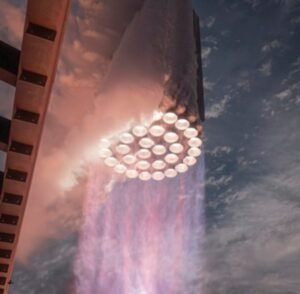Starship’s Orbital Breakthrough
SpaceX’s Starship megarocket, the largest and most powerful rocket in the world, achieved orbital speed for the first time during a historic third test flight from South Padre Island, Texas, on Thursday.
Hundreds of spectators, including Spring Break revelers, rocket launch enthusiasts, and SpaceX fans, gathered along the southern shores of South Padre Island and surrounding areas to witness the third test flight of the largest rocket ever constructed.
Starship re-entering Earth’s atmosphere. Views through the plasma pic.twitter.com/HEQX4eEHWH
— SpaceX (@SpaceX) March 14, 2024
Approximately 5 miles (8 kilometers) south of the crowds, SpaceX’s massive Starship vehicle took off on the morning of March 14 at 9:25 a.m.

Starship reaches orbital velocity amidst cheers
Elon Musk announced on X (formerly Twitter) after liftoff, “Starship has reached orbital velocity.”Congratulations SpaceX team!!” The launch coincided with the 22nd anniversary of SpaceX’s founding in 2002, according to the company.
While neither the Starship vehicle nor its Super Heavy booster made it all the way to their intended splashdown, SpaceX officials noted that the test flight accomplished several of its primary objectives.
The South Padre crowd erupted in cheers as the dim morning sky lit up with the ignition of Starship’s 33 first-stage Raptor engines, enveloping nearly the entire vehicle in a plume of dust and smoke. Within seconds, the 400-foot tall (122 meters) rocket emerged from the plume, swiftly ascending into the sky.
SpaceX’s Starship Progress
“Just after liftoff in a livestream, SpaceX spokesperson Dan Huot remarked, ‘This flight pretty much just started, but we’re farther than we’ve ever been before. “We have a Starship not only in space but also in its coast phase.”
Today’s launch, dubbed Integrated Flight Test-3 (IFT-3), marked the third test mission for the fully stacked Starship. The initial two Starship launches last year ended explosively, with both vehicles detonating before completing their mission objectives. However, insights gleaned from those initial flights aided SpaceX engineers in preparing Starship for future success.
Improvements implemented between IFT-1 and IFT-2 last year included the introduction of a “hot staging” technique, where the upper stage engines ignite before Starship’s first-stage booster, known as Super Heavy, fully separates. The hot staging maneuver during IFT-2 proved successful, a feat replicated in today’s mission as well.
SpaceX’s Starship Flight: Challenges and Objectives
High in the sky, Starship’s two stages parted ways approximately 2 minutes and 45 seconds after liftoff. The 165-foot-tall (50 m) upper-stage spacecraft continued its journey into space, while Super Heavy initiated preparations for a boostback burn to adjust its trajectory. Following the staging, the planned burn to reverse Super Heavy’s velocity occurred. However, the subsequent landing burn, intended to happen minutes later above the Gulf of Mexico, did not occur as expected, resulting in the loss of the booster.” We didn’t see all the engines relight as anticipated, resulting in the loss of the booster,” stated Huot. We will have to analyze the data to precisely determine what happened.
Starship is engineered for full reusability, akin to SpaceX’s Falcon 9 rockets. In the future, the Super Heavy booster was intended to be caught by two “chopstick” arms on Starship’s launch tower upon return for landing. However, for IFT-3, the Super Heavy was planned to splash down in the Gulf of Mexico.
Following separation, Starship’s upper stage continued its flight, opting not to pursue a full orbit. Instead, it embarked on a suborbital coast phase above Earth, during which SpaceX aimed to showcase two critical flight systems for vehicle qualification: reignition of Starship’s Raptor engines and cryogenic fuel transfer between tanks. Subsequently, the spacecraft was slated to splash down in the Indian Ocean approximately 65 minutes post-launch. However, SpaceX encountered a loss of communication with the spacecraft during reentry.











Comments 1